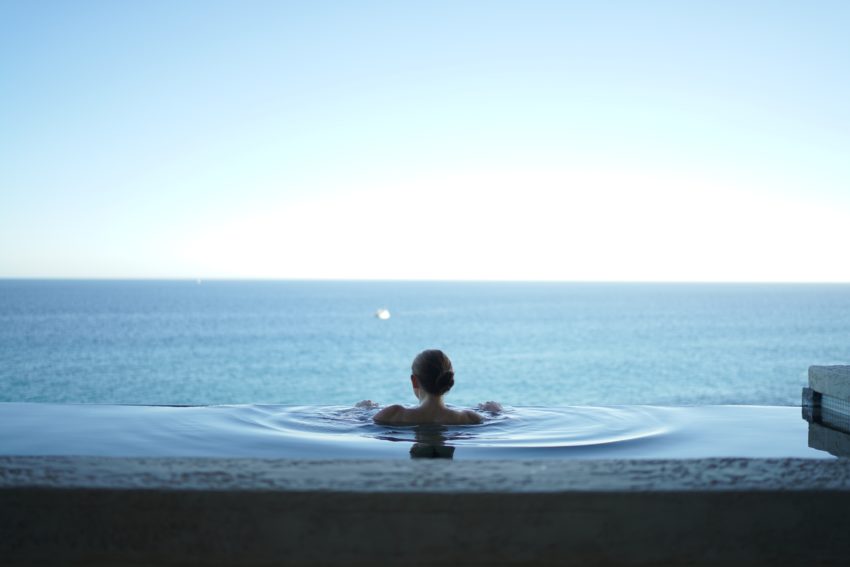Having a backyard pool or hot tub is awesome, but all of the chemical monitoring can seem really complex and time consuming. What’s the deal with pool chemical monitoring– why is it so necessary, and why are there so many components?
Read on for some quick answers to these questions, and learn why monitoring the chemicals in your pool is so important.
Chlorine
This is the pool chemical that everyone knows about – the one you probably think “burns your eyes” if you stay under too long. That burning sensation is actually a result of improperly balanced pool chemicals, which is why accurate and current monitoring is an essential part of enjoying your pool.
Chlorine’s job is to prevent things from growing in your pool. Microorganisms that can cause disease, algae that turns the water murky and clogs up filtration systems, and other plants and creatures can present a risk to your health and the fun of going for a swim. A naturally-occurring element usually found bound up in rocks and mineral compounds, chlorine is a perfectly safe way to keep your pool clean year-round.
Cyanuric Acid
There’s just one problem with chlorine; exposure to the sun’s UV rays causes the chlorine to degenerate, meaning it won’t do it’s job of keeping your pool clean. Cyanuric acid helps stabilize chlorine, allowing it to do it’s job even with high exposure to UV rays– like during the summer months, when you probably make the most use of your pool.
Too much cyanuric acid can actually “lock up” the chlorine and prevent it from doing it’s job, though, which is why constant monitoring and adjusting of your pool’s chemicals is needed. UV levels change, chlorine gets “used up” as it kills off the bacteria and algae spores that find their way into your pool, and thus the amount of cyanuric acid in your pool needs frequent adjustments to keep everything in balance.
Alkalinity and pH
The pH level of your pool’s water is another important chemical component that impacts chlorine’s performance, not to mention the safety of your pool itself. A pH that is too high or too low increases the likelihood of irritation to the skin, eyes, and mucous membranes, and also makes it difficult for chlorine to do its job.
Alkaline compounds–such as sodium bicarbonate, or simple baking soda–can be used to raise pH, and more importantly they act as buffers against changes in pH. Keeping the right amount of alkaline chemicals in your pool’s water will prevent big swings in pH and make monitoring and adding other necessary chemicals an easier process.
Acids such as muriatic or hydrochloric acid can be used to lower your pool’s pH. Monitoring your pool’s pH on a constant basis enables you to keep it controlled with less reliance on chemicals, as you can make minor adjustments to chemical levels on a regular basis instead of identifying a major pH imbalance, overcorrecting with too much of a chemical additive, then swinging back and forth as you try to find the happy medium. The recommended pH range is 7.2-7.6.
Adding it All Up
Pool chemical monitoring allows you to keep your pool clean, safe, and refreshing, allowing chlorine to keep the organic nasties at bay despite the presence of UV rays and the natural tendency for pH balances to shift. The more accurate, consistent, and up-to-date your monitoring is, the more efficient your use of pool chemicals will be, and the more you’ll enjoy your pool.

